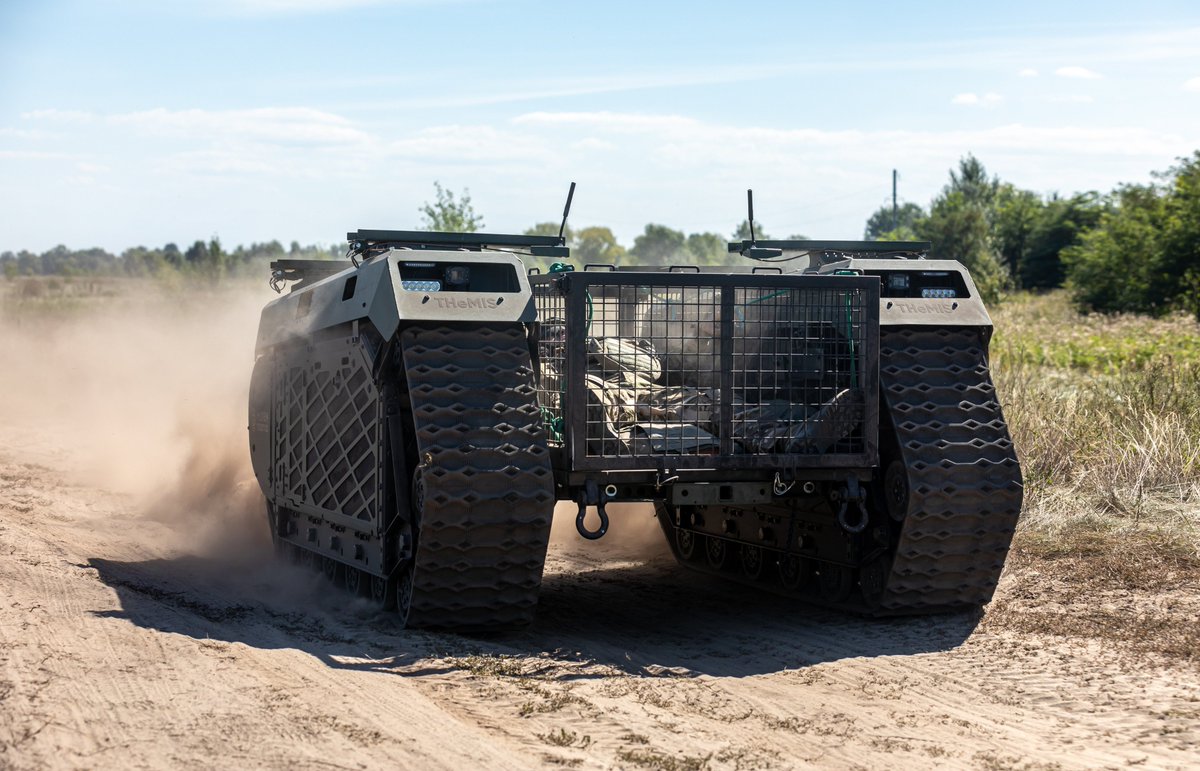🧵1/ Combat medicine is being rewritten in Ukraine.
russia’s full-scale war isn’t just transforming the battlefield -- it’s forcing medics to adapt to drone warfare, mass trauma, and extensive evacuation delays of the wounded.
Here’s what NATO should be learning.
russia’s full-scale war isn’t just transforming the battlefield -- it’s forcing medics to adapt to drone warfare, mass trauma, and extensive evacuation delays of the wounded.
Here’s what NATO should be learning.

2/ Shrapnel, not bullets.
@rima_medUA: Blasts from drone-dropped munitions now cause the majority of injuries, not close-quarters fire.
“Medics out here are forced to learn on the fly because we have no other choice."
@rima_medUA: Blasts from drone-dropped munitions now cause the majority of injuries, not close-quarters fire.
“Medics out here are forced to learn on the fly because we have no other choice."
@rima_medUA 3/ Mass casualty is the norm.
@rima_medUA said: "Nine times out of 10, it’s not just one or two wounded, it’s a full-blown mass casualty situation.”
“Almost all the injuries we see now are drone-related injuries,” says Colonel Kostiantyn Humeniuk.
@rima_medUA said: "Nine times out of 10, it’s not just one or two wounded, it’s a full-blown mass casualty situation.”
“Almost all the injuries we see now are drone-related injuries,” says Colonel Kostiantyn Humeniuk.
4/ russia is deliberately targeting medics.
Red crosses don’t protect you -- they make you a target.
Mark an ambulance, and “it’ll be hit within 15 minutes.”
The kill zone now extends up to 40km from the front.
Red crosses don’t protect you -- they make you a target.
Mark an ambulance, and “it’ll be hit within 15 minutes.”
The kill zone now extends up to 40km from the front.
5/ Evacuation is the single biggest challenge.
Armored vehicles are vulnerable.
Fiber-optic drones can loiter silently and strike any movement.
And medical evacuation under fire has become nearly impossible.
Armored vehicles are vulnerable.
Fiber-optic drones can loiter silently and strike any movement.
And medical evacuation under fire has become nearly impossible.
6/ Ukraine is adapting with underground field hospitals, wood-reinforced to absorb shrapnel.
Advanced surgeries are performed under constant threat.
Facing a much larger military that can afford to expend far greater human resources, Ukraine relies on tech & ingenuity.
Advanced surgeries are performed under constant threat.
Facing a much larger military that can afford to expend far greater human resources, Ukraine relies on tech & ingenuity.
7/ Robots are stepping in (and will have a far more important role in the coming months).
Ukraine now uses UGVs - uncrewed ground vehicles - to evacuate wounded when human teams can’t.
As comms systems improve on the UGVs, more evaucations will be possible.
Ukraine now uses UGVs - uncrewed ground vehicles - to evacuate wounded when human teams can’t.
As comms systems improve on the UGVs, more evaucations will be possible.
8/ Ground robots will continue to save more lives on the front.
One UGV, “Maul,” developed by Ukraine’s First Separate Medical Battalion, can reach 65 km/h and evacuate wounded over long distances, even under enemy fire.
One UGV, “Maul,” developed by Ukraine’s First Separate Medical Battalion, can reach 65 km/h and evacuate wounded over long distances, even under enemy fire.
9/ As the technology matures, ground robots are expected to see wider use.
They’re already proving effective in transporting supplies across the front lines, reducing the need to expose soldiers to direct fire.
They’re already proving effective in transporting supplies across the front lines, reducing the need to expose soldiers to direct fire.
10/ The growing infusion of technology into frontline medical operations highlights just how rapidly the battlefield is evolving.
“European countries, and the United States too, are simply not ready for this kind of war,” says Humeniuk, Chief Surgeon of the Medical Forces.
“European countries, and the United States too, are simply not ready for this kind of war,” says Humeniuk, Chief Surgeon of the Medical Forces.
• • •
Missing some Tweet in this thread? You can try to
force a refresh













